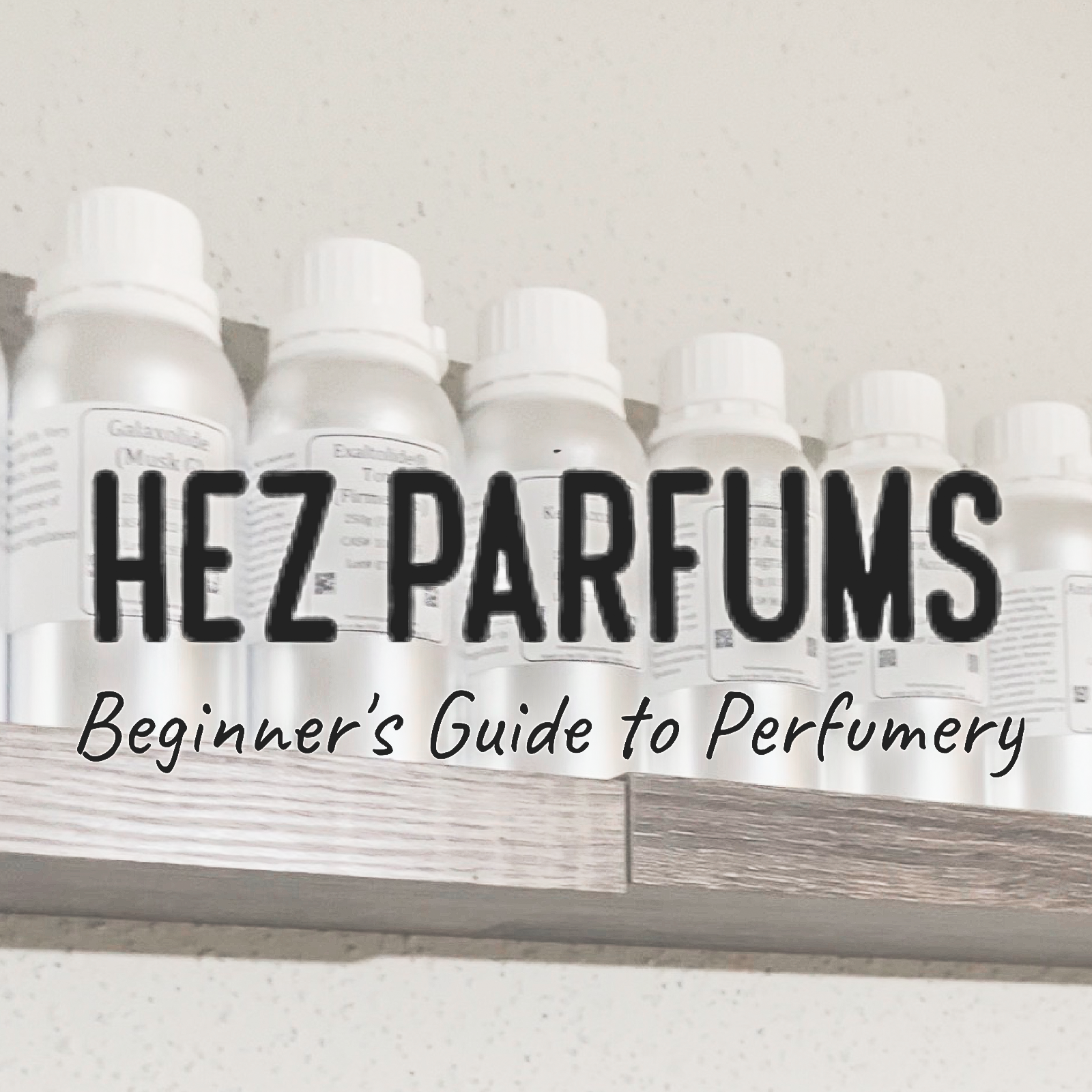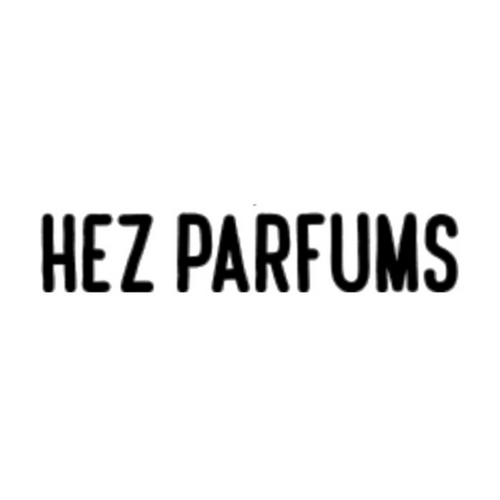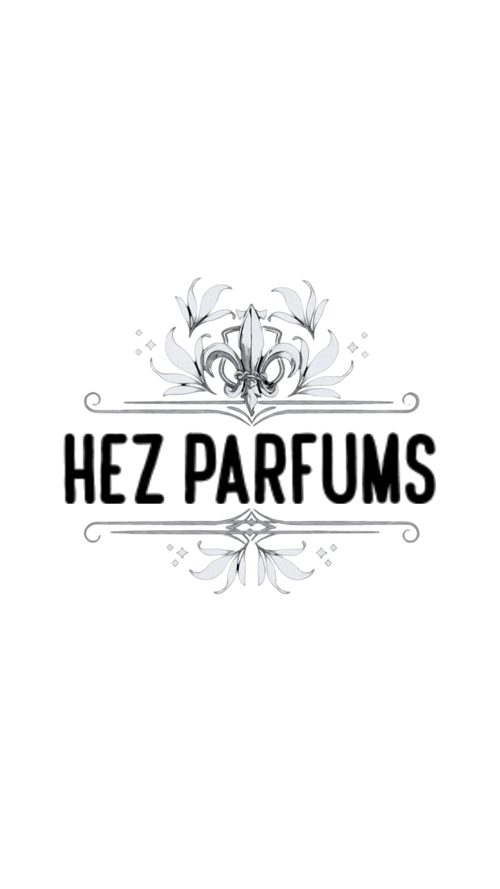Hez Parfums Beginner's Guide to Perfumery 001 - Materials, Equipment and Supplies

Hez Parfums Beginner's Guide to Perfumery 001 - Materials, Equipment and Supplies
Are you eager to elevate your passion for fragrances to the next level? Welcome to the Hez Parfums Beginner's Guide to Perfumery series! Designed for beginner perfumers, this series aims to unravel the intricate and thrilling world of perfumery.
Getting Started: Materials and Supplies
In this guide, we will review the essential materials and supplies crucial for your perfuming journey.
Whether you're a novice or looking to refine your skills, understanding these fundamentals will set a solid foundation.
Starter Kits: Your First Step
When embarking on the journey of creating your own perfumes, investing in a starter kit is highly recommended. These kits are readily available from various suppliers, and provide an entry point with essential tools and materials. Typically, they include prediluted oils for safer handling, along with gloves, pipettes, bottles, and instruction manuals—a perfect introduction to perfuming.
The Basics: Essential Tools and Supplies
After familiarizing yourself with a starter kit, advancing to quality supplies is the next step. While starter kits provide a foundational understanding, sourcing high-quality materials ensures optimal results. Let’s explore the essential tools and supplies indispensable in perfumery:

1. Safety First
When making perfume, safety is crucial due to the use of potentially hazardous chemicals. Essential safety equipment includes:
- Gloves, Safety Goggles, Lab Coat or Apron, Mask or Respirator, A Well-Ventilated Workspace, and Fire Extinguisher
* Always follow safety data sheets (SDS) for the specific chemicals you're using and ensure you're familiar with emergency procedures.
2. Base Oils
Base oils are vital in perfume-making, serving as carriers for fragrances and aiding in the effective blending of essential oils. Here are some commonly used base oils:
- Jojoba Oil: Known for its stability and skin-similar properties, jojoba oil offers a mild, nutty aroma and excellent moisturizing benefits.
- Fractionated Coconut Oil: A stable, odorless oil perfect for blending with essential oils without altering their scent profiles.
- Sweet Almond Oil: Rich in nutrients with a mild, sweet aroma, ideal for absorbing and carrying fragrances.
- Grapeseed Oil: Light and easily absorbed, grapeseed oil suits those preferring non-greasy bases.
- Apricot Kernel Oil: Light and gentle, apricot kernel oil adds a faint nutty scent, popular in natural perfumery.
- Sunflower Oil: Lightweight with high linoleic acid content, sunflower oil absorbs well and offers a neutral scent.
- Safflower Oil: Similar to sunflower oil, safflower oil is non-greasy with a mild, nutty aroma.
- Rice Bran Oil: Rich in antioxidants, rice bran oil has a light, neutral scent and nourishing properties.
- Evening Primrose Oil: Sweet and rich in fatty acids, evening primrose oil adds nourishment to perfumes.
- Argan Oil: Known for its moisturizing benefits, argan oil has a nutty aroma and is beneficial for the skin.
Choosing the right base oil depends on factors like skin type and desired fragrance longevity. Experimenting with combinations can lead to unique formulations tailored to personal preferences.
3. Solvents
Solvents dissolve and dilute essential oils and fragrant compounds in perfumery. Here are common solvents used:
- Ethanol (Ethyl Alcohol): Widely used for its effective dissolution of fragrant ingredients and quick evaporation.
- Isopropyl Alcohol: An alternative to ethanol, isopropyl alcohol evaporates slower, affecting perfume drying time.
- Denatured Alcohol: Ethanol treated to prevent consumption, serving as an economical solvent.
- Carrier Oils: Jojoba, fractionated coconut, or sweet almond oils are used as solvents in oil-based perfumes.
- Glycol Ethers: Propylene glycol or dipropylene glycol, offering good solvency for fragrance compounds.
- Superior Quality Perfumer's Alcohol (SPA): Highly purified ethanol for minimal odor interference and maximum solvency.
The choice of solvent depends on the perfume type (alcohol-based, oil-based), desired drying time, and regulatory requirements.
4. Essential Oils
Essential oils impart distinctive aromas to perfumes, derived from plant parts like flowers, leaves, and fruits. Here are common essential oils categorized by aroma profiles:
- Floral: Rose, jasmine, lavender, neroli, and ylang-ylang.
- Citrus: Bergamot, lemon, orange, mandarin, and grapefruit.
- Woody: Sandalwood, cedarwood, patchouli, vetiver, and frankincense.
- Herbal and Spicy: Basil, peppermint, ginger, cinnamon, and clary sage.
- Resinous and Balsamic: Myrrh, labdanum, benzoin, and frankincense.
- Fruity: Vanilla, blackcurrant, and apple.
- Spice: Cardamom and nutmeg.
Blending oils from these categories creates complex and balanced fragrance compositions, offering varied sillage and longevity.
5. Aroma Chemicals
Synthetic aroma compounds enhance perfumery with unique olfactory profiles. Common aroma chemicals include:
- Floral: Methyl anthranilate, phenylethyl alcohol, benzyl acetate, and ionones.
- Citrus and Fresh: Limonene, citral, citronellol, and aldehydes.
- Woody and Amber: Iso E Super, ambroxan, cedrol, and cashmeran.
- Musk and Animalic: Galaxolide, civetone, and ambrettolide.
- Green and Herbal: Galbanum, cis-3-hexenol, and estragole.
- Spicy and Balsamic: Vanillin, eugenol, and iso eugenol.
These chemicals expand creative possibilities, offering longevity and consistency to fragrances.

6. Fixatives
Fixatives stabilize and prolong perfume fragrance on the skin. Common fixatives include:
- Orris Root, Benzoin Resin, Labdanum, Ambrette Seed, Musk, Vanilla, Cistus, Tonka Bean, Frankincense, and Cedarwood.
These substances enhance fragrance depth and longevity, ensuring a lasting impression.

8. Measuring Tools
Accurate measurements are essential for consistent fragrance blends. Tools include:
- Graduated Cylinders, Measuring Beakers, Pipettes, Measuring Spoons, Funnels, Stirring Rods, Digital Scales: Each aids in precise ingredient blending.

9. Droppers and Stirring Tools
Essential for precise ingredient handling:
- Pipettes, Droppers, Dropper Bottles, Stirring Rods, Magnetic Stirrers, Electric Stirrers, Vortex Mixers: Each ensures accurate measurement and thorough blending.

10. Glass Bottles
Choosing the right glass bottle preserves fragrance integrity. Types include:
- Spray, Roll-On, Splash, Decant, and Vials: Each suited to specific application preferences.
- Considerations: Glass ensures fragrance stability, with amber or dark blue hues protecting against light exposure.
11. Documentation
Maintaining records ensures consistency and compliance:
- Formula Sheets, Batch Records, Safety Data Sheets (SDS), Quality Control Records, Regulatory Documents, Research and Development Notes, Labeling and Packaging Specifications, Inventory Records: Essential for quality assurance and regulatory compliance.

12. Packaging and Presentation
Critical for marketing and preserving fragrances:
- Outer Packaging, Bottle Design, Caps, Sprayers, Rollers, Labels, Decoration, Protective Packaging, Sustainability, Regulatory Compliance: Factors influencing packaging choice.
Conclusion
Armed with these foundational insights into materials and supplies, you're well-equipped to embark on your perfuming journey. Experimentation and exploration will unlock endless creative possibilities, allowing you to craft personalized and captivating fragrances.
Stay tuned for more guides from Hez Parfums as we unravel the art and science of perfumery. Happy perfuming!
---
In this blog, we've covered the essential materials and supplies needed for perfume-making, providing a comprehensive overview to empower beginners and enthusiasts alike in their perfuming endeavors.

